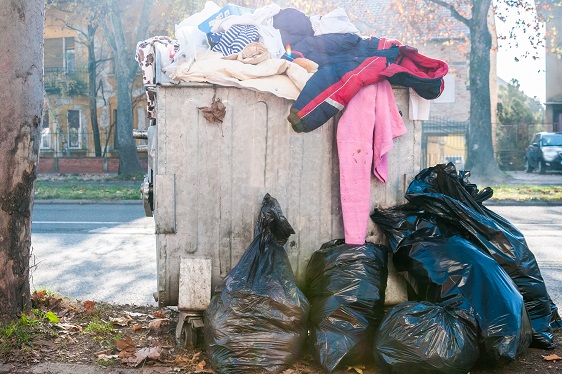Sustainable fashion

Nov 05 2019 - The debate over sustainability in fashion continues to snowball, and a new report issued by the European Commission provides a forward-looking business angle to the debate. The report offers a mapping of future business opportunities for SMEs within sustainable fashion. The authors recognise long product life as an “emerging trend”, and this idea – keeping clothes in use for as long as possible – also makes up the foundation of many of the report’s case studies, trends and business opportunities.
“Longer active life is now considered the most effective way of improving sustainability“, the report concludes, echoing NGOs like Fashion Revolution, Ellen MacArthur Foundation and Greenpeace, all stakeholders who for environmental reasons promote product longevity and a move away from today’s massive consumption of disposable fast fashion. At present longevity is the single largest opportunity to reduce the carbon, water and waste footprints of clothing. Quite simply, if clothes have a longer active life, they can be replaced less frequently - reducing the volume discarded to landfills and meaning fewer resources are consumed in manufacturing.
Until a few years ago it was generally unknown to the broader public that washing of textiles like nylon and polyester causes microplastic pollution. In the same way, the idea of extending the lifetime of clothing for sustainability reasons has grown with consumers in the past few years, much fuelled of course, by the increased societal focus on climate change in general, and the massive pollution of the fashion industry in particular. Today, 39% of consumers in the UK say the fashion industry should prioritise design for long active clothing life in order for fashion to become more sustainable, according to a new survey commissioned by the International Fur Federation.
The long active life of fashion garments can be supported in different ways but is often most associated with price, quality, fit, emotional attachment, product warranties, remodelling, reuse and the availability of workshops where clothing can be repaired.
When the EU points to emerging trends within sustainable fashion, which provides potential business opportunities for SMEs in Europe, the general focal point is also extended product use. Increased customisation, ‘fashion on-demand’ (as opposed to bulk manufacturing) and business models based on clothes sharing are the key trends identified by the EU Commission, while consumer-wise the report says there is a shift towards new value-led consumerism taking place, which is particularly evident in the younger generations.
According to fashion researcher Else Skjold, Associate Professor at the Royal Danish Academy of Fine Arts Schools of Architecture, Design and Conservation, Copenhagen, the shift in consumer attitudes is however, not reserved the young but represent a wider societal idea that first and foremost manifests itself in a showdown with fashion’s inherent narrative about the fashionable as something new.
"At present, we are experiencing what I consider a weariness amongst consumers over a system that increasingly has flooded the market with poorly manufactured clothes. It’s apparent in dropping sales of high street fashion. It’s apparent from a decreasing number of exhibitors at fashion fairs because manufacturers are moving away from large collections to small ‘drops’ in order to avoid dead stocks. It also shows at fashion weeks as more and more designers let go of the traditional runway formats. Even within the established fashion press, we begin to see alternatives to the storytelling about ‘new’. This movement reflects the beginning of the end of the production system we know today," Else Skjold said.
Regardless of emerging trends, however, there is still a long way to go for a fashion industry more or less caught up in traditional linear business models designed produce cheap, fast fashion - and lots of it. In spite of many sustainability initiatives within the fashion industry, any progress is suppressed by the ever-growing consumption. According to the industry’s own report ‘The Pulse of the Fashion Industry,’ the amount of clothing being purchased is expected to rise from 62 million today to 102 million tons in 2030.
If fashion indeed faces the paradigm shift towards circular business models and value-led consumption suggested by NGOs and experts alike, the established fashion industry could benefit from looking at the way the natural fur is designed, consumed and handled, Else Skjold says. She points to the way natural fur throughout a time otherwise characterised by disposable fashion, have continued to be a product consumers took to furrier workshops for repairment and remodelling. In turn, the active life of natural fur garments is counted in decades rather than years, often with more than one user.
"Natural fur is an example of both a circular economy and durable design. In the end, it is these things that matter in sustainability," she said.